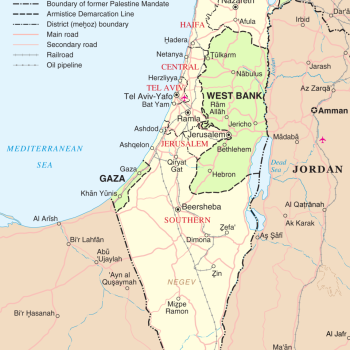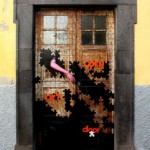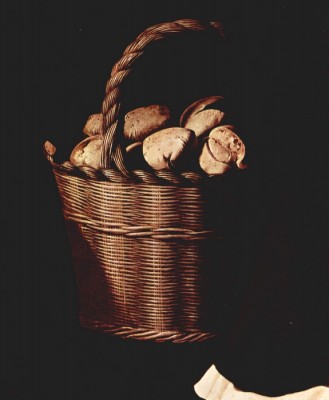 For a month of Sundays the readings are a drama of holy bread, miracle bread, bread that came down from heaven, bread, Jesus said, that gives life to the world. And the world, so the story says, did not expect this bread – and misunderstood it.
For a month of Sundays the readings are a drama of holy bread, miracle bread, bread that came down from heaven, bread, Jesus said, that gives life to the world. And the world, so the story says, did not expect this bread – and misunderstood it.
Over the centuries Christians have called this bread by a number of names: bread broken and shared – the bread of heaven – the bread of life – the bread of redemption. Eucharistic bread is now the name most Christians use, from a Greek word for thanksgiving. The decision to use this name arose to change the emphasis away from shadows that loomed large over the table, shadows that made this bread a gloomy gift, a gift you approached through beating your breast and declaring your utter unworthiness.
Various things had grown these shadows:
Our perpetual habit of changing details into pieties and over-worshipping them.
Heated theological arguments and scalding sermons, marking historical change with theological controversy.
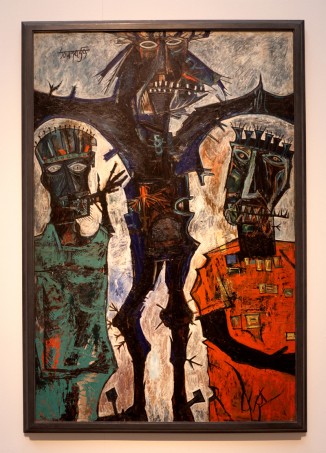 The black death (for which many thought sacred bread would be a cure). And popular medieval practices like crawling on one’s knees to the altar down the stone-floored aisles of cathedrals while reciting the rosary as proof of sincere penitence.
The black death (for which many thought sacred bread would be a cure). And popular medieval practices like crawling on one’s knees to the altar down the stone-floored aisles of cathedrals while reciting the rosary as proof of sincere penitence.
All this had dimmed the joy this bread brings to human journeys.
Christ’s bread is inseparable from the manna in the wilderness, which came down from heaven and fed the hungers and soothed the fears of people who had left the only home they had ever known, Egypt, with its plentiful food and plentiful cruelty, shame and humiliation for immigrants who, after ten generations, could not stop being aliens there and were not seen as Egyptian. In Egypt, they had no hope of a better life.
They left in search of a place to call home, where they could, in fact, rejoice in their lives. And the manna came when they were not there yet. It came when they were overwhelmed by hunger and there was no food in sight. It came when they gave up hope and wished they had never left. And the bread that came to them each day was an assurance that they would find a home where they belonged. A promised land.
 So the manna was bread of rejoicing, it was Eucharistic bread, bread of heaven, that brought them life and filled their hunger.
So the manna was bread of rejoicing, it was Eucharistic bread, bread of heaven, that brought them life and filled their hunger.
But I wonder, now that our table emphasis is on joy, how artificial this seems when we neglect to name there our deep hungers, our long search, the ways in which we still homelessly wander in this world as we eat this bread?
Sunday I sat with a man whose wife of 64 years had just died the night before. We sat in their home, which was the house he had grown up in, an old farmhouse on an older farm. It was the only home he had ever known, and over the years he had seen all the farms disappear as the economy changed, and he had sold his own milk cows. But he still had her, his beloved. And now the house is empty of any scrap of feeling like home, because she is not there.
People brought food, he said he wasn’t hungry. He did take a cookie from a 5 year old great-grandson who had something of her in his eyes, as well as a bit of a troubled look, as he watched the old man, seeing real sorrow. The boy’s parents have separated, he spends alternate weekends at his great-grandad’s house with his mom. He has his own pain, so he knows pain.
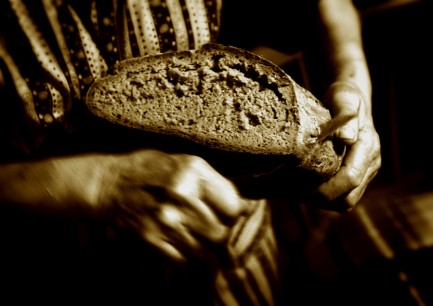 Most of us come to the table aware of some urgent hunger in our lives and trying to stifle it in order to be thankful in the moment, and we go away feeling strangely empty, because our hunger is still there. My own longings are confusing, mixing real needs with false ones, as the Israelites did in the wilderness when they tried to store the manna in jars. Home is a place for storing things, stuff, secrets, misery. And home is a place where we have more control than anywhere else in the world. Home is a place where we hoard and hide. Home is where our hearts are, the place we most wish to leave, the place we most want to return to.
Most of us come to the table aware of some urgent hunger in our lives and trying to stifle it in order to be thankful in the moment, and we go away feeling strangely empty, because our hunger is still there. My own longings are confusing, mixing real needs with false ones, as the Israelites did in the wilderness when they tried to store the manna in jars. Home is a place for storing things, stuff, secrets, misery. And home is a place where we have more control than anywhere else in the world. Home is a place where we hoard and hide. Home is where our hearts are, the place we most wish to leave, the place we most want to return to.
When the Israelites left Egypt, as refugees, as emigrants, placing their hope in an unknown land, and leaving behind them all their front doors and back bedrooms, and all the things you cannot carry on your back, baby clothes your mother knitted long ago, a worn collar from a long-dead dog, a gold star from third grade, a letter and a picture from a WW2 soldier who died on D Day, grammar school report cards. When the Israelites left Egypt, they were like refugees now.
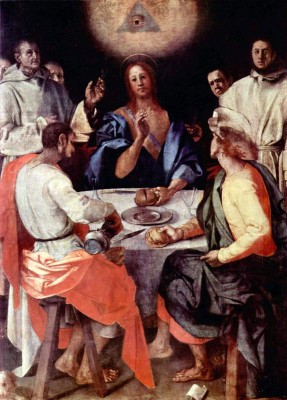 Like African people, arriving on the Italian island of Lampedusa in pitifully inadequate boats, hundreds of them drowning in the sea. Like Central American children at the doorstep of the USA. Like the Greeks, pouring into the streets to protest their lack of food and jobs in a crushing economy. Like black Americans, asking if black lives have worth in the USA. Like strugglers and stragglers everywhere: in animal shelters, homeless shelters, refugee camps, rehab hospitals. All reaching for a sign, that there is reason to hope in tomorrow, to keep going on the long journey.
Like African people, arriving on the Italian island of Lampedusa in pitifully inadequate boats, hundreds of them drowning in the sea. Like Central American children at the doorstep of the USA. Like the Greeks, pouring into the streets to protest their lack of food and jobs in a crushing economy. Like black Americans, asking if black lives have worth in the USA. Like strugglers and stragglers everywhere: in animal shelters, homeless shelters, refugee camps, rehab hospitals. All reaching for a sign, that there is reason to hope in tomorrow, to keep going on the long journey.
Jesus urges, do not eat your fill of loaves and then want more, but eat the bread that satisfies your hunger. And we keep saying, what is it, give it to us. And he said he was that bread. He understood that real hunger must be fed with hope, not merely with grain. And to offer hope, you have to see, and know and name and be lost in the shadows in which hope has been lost, and where it can be found.
Ours is a hasty meal. We need to be up again and off, on our way. This is a canteen, not a fine restaurant. It satisfies us – for now.
__________________________________________________________
Illustrations:
1. Basket of Bread. Francisco de Zurbaran, 1639, Guadalupe, Spain, Vanderbilt Divinity School Library, Art in the Christian Tradition.
2. Crucifixion. Souza, F.N. 1959. Vanderbilt Divinity School Library, Art in the Christian Tradition.
3. Our Daily Bread. Zorn, Anders. 1886. Stockholm, Sweden. Vanderbilt Divinity School Library, Art in the Christian Tradition.
4. Bread of Life. Photo. Vanderbilt Divinity School Library, Art in the Christian Tradition.
5. Supper at Emaus. Pontormo, Jacopo da. Galleria-dell’Accademia, Florence, Italy Vanderbilt Divinity School Library, Art in the Christian Tradition.



